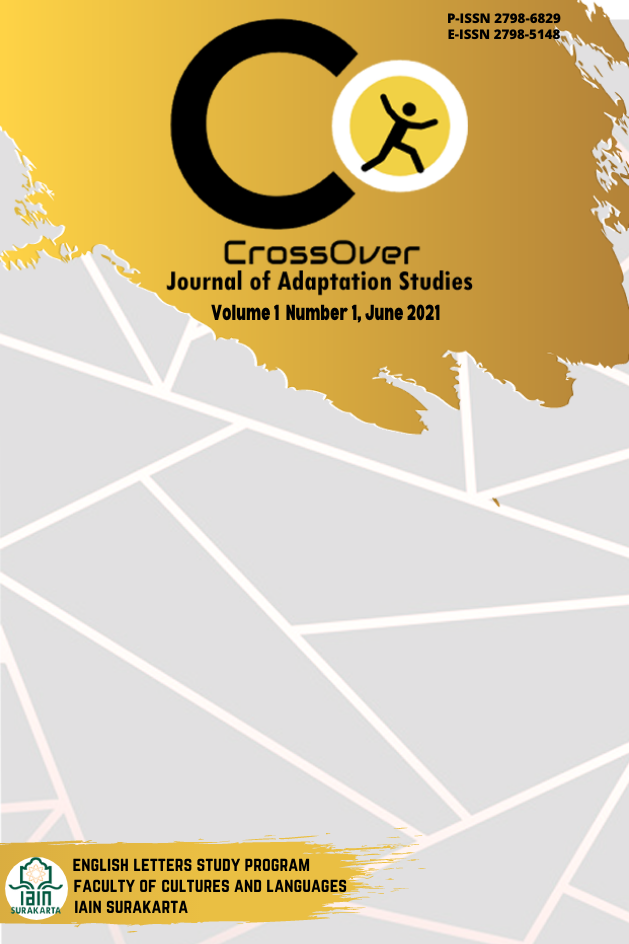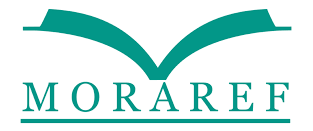NEW WORLD UTOPIA ELEMENTS IN CHRISTOPHER NOLAN'S THE DARK KNIGHT TRILOGY
DOI:
https://doi.org/10.22515/crossover.v1i1.3696Abstract
This paper aims to analyze the representation of New World Utopia elements in one of the highest grossing movie franchises, Christopher Nolan's The Dark Knight Trilogy which consists of three movies Batman Begins (2005), The Dark Knight (2008) and The Dark Knight Rises (2012), all of them directed by Christopher Nolan and written by David S. Goyer. In this movie franchise, the depiction of American utopia elements can be seen clearly by looking at the plots, characters and other supporting data. By using Stuart Hall’s Representation Theory, this analysis explains the representation of New World utopia elements in Christopher Nolan’s The Dark Knight trilogy. The representation of these elements can be found in the form of the rule of law, beloved community, liberalism and populism. This American popular narrative consists of American values and ideologies which can be accepted not only by American audience but also worldwide audience.
Downloads
References
Creswell, J. (2009). Research Design: Qualitative, Quantitative, and Mixed Methods Approaches. Los Angeles: SAGE Publication.
Dietz, J. (2010). Film Critics Pick the Best Movies of the Decade. Retrieved on April 30, 2019, from, https://www.metacritic.com/feature/film-critics-pick-the-best-movies-of-the-decade
Evangelista, C. (2018). We Burned the Forest Down: ‘The Dark Knight’ 10 Years Later. Retrieved on April 30, 2019, from https://www.slashfilm.com/dark-knight-anniversary/
Finkelstein, D. et al. (1999). Batman's Big Birthday. Retrieved on April 30, 2019, from https://web.archive.org/web/20080114031758/http://www.guardian.co.uk/g2/story/0%2C%2C314504%2C00.html
Gamer, B. (ed.). (2009). Black's Law Dictionary, 9th Edition. United States: West.
Graham, G. (1992). Liberalism and Democracy. Journal of Applied Philosophy, Vol. 9, No. 2. 149-160
Hall, S. (2003). Representation: Cultural Representation and Signifying Practices. London: Sage Publication.
Kjell, G. (2000). Nationalism and Internationalism in the Post-Cold War Era. Lon-don: Routledge.
McKee, A. (2003). Textual Analysis: A Beginner’s Guide. London: Sage.
Nolan, C. (2005). Batman Begins. United States: Legendary Pictures Syncopy.
_______ (2008). The Dark Knight. United States: Legendary Pictures Syncopy.
________ (2012). The Dark Knight Rises. United States: Legendary Pictures Syn-copy.
Mahsun. M. (2005). Metode Penelitian Bahasa: Tahapan Strategi, Metode, dan Tekniknya. Jakarta: PT. Raja Grafindo Persada.
Mudde, C. (2004). The Populist Zeitgeist. Government and Opposition Vol. 39, No. 4. 541-563.
Ostendorf, B. (2001). Why is American Popular Culture is So Popular? A View from Europe. American Studies Vol (46) No (3) Popular Culture, 339-366
Pearson, R. et al. (1991). The Many Lives of the Batman: Critical Approaches to a Superhero and His Media. London: Routledge.
Rafter, N. (2006). Shots in the mirror: Crime films and society (2d ed.). New York: Oxford University Press.
Stone, S. (2019). Aquaman Will Pass the Dark Knight's Box Office This Weekend (Probably). Retrieved on April 30, 2019, from, https://www.cbr.com/aquaman-dark-knight-box-office-total/
Strinati, D. (2004). An Introduction to Theories of Popular Culture. London and New York: Routledge.
Timpe, K. (2016). Free Will. Retrieved on Sunday, August 28, 2016, from, http://www.iep.utm.edu/freewill/
Downloads
Published
How to Cite
Issue
Section
Citation Check
License
Copyright (c) 2021 CrossOver : Journal of Adaptation Studies

This work is licensed under a Creative Commons Attribution-ShareAlike 4.0 International License.
Authors retain copyright and grant the journal right of first publication with the work simultaneously licensed under a Creative Commons Attribution 4.0 International License that allows others to share the work with an acknowledgment of the work's authorship and initial publication in this journal.

















